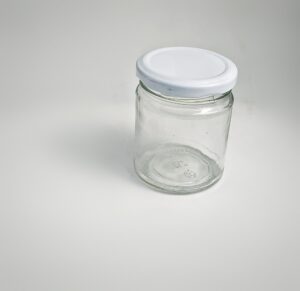Offer - Use Code "love40" to get 40% OFF on Candles. Use Code - "EO10" to get 10% OFF on Essential Oils. COD available for orders below 1500. Shipping Charges will be added at the end while placing the order. Happy Candle 🕯️ Making.
Candle Making at Home for Beginners: A Step-by-Step Guide (2025)

Are you passionate about candles? If yes, then you can turn your passion into a profitable business. Candle making at home can be a rewarding business venture as there is a growing global demand for unique and handcrafted candles.
By choosing the right materials, techniques, and creativity, you can create a range of candles that appeal to a variety of customer preferences. You can enjoy the satisfaction of running your own business while unleashing your creativity.
How Candle used for Different Purpose
A candle brings the elements of light, warmth, and aroma together. Candles add warmth and charm to homes, restaurants, and outdoor gatherings. They bring a sense of calm and relaxation to any occasion, whether it’s a romantic dinner, a relaxing bath, aromatherapy, meditation, or religious ceremony.
Scented candles are used during mediation or as part of a self -care routine to reduce stress. It helps to improve mood and enhance overall wellness. These aromatic candles offer a pleasant sensory experience that enhances various relaxation practices. Candles can bring joy and peace during celebrations and times of remembrance.
Candle Making Supplies List
Candle making can be a fulfilling and profitable venture that you can start from the comfort of your own home. While it does require a few specialized items, some careful planning, and patience, it is not as difficult as you might think. We will guide you through the process of candle making for a home-based business. Before diving into the candle making process, it’s important to understand the different materials that are essential for starting a candle making business at home. These materials include:
Wax

Wax is primarily a hydrocarbon that is solid at room temperature and melts upon heating. Melted wax is used as fuel to keep candles burning. As the wax cools, it solidifies again. Waxes is commonly used for candle making since it burns slowly and emits light.
Candle wax can be available in the form of wax shavings or wax flakes. Apart from Paraffin wax and natural beeswax, soy wax which are commonly used, Microcrystalline wax, coconut wax and palm wax can also be used.
Where are the Sources of Wax?
The waxes used to make candles are made from a variety of fats, oils, and wax-like substances derived from animals, insects, and plants. Additionally, wax can be synthesized from petroleum.
There are three main types of waxes: natural wax, synthetic wax, and a combination of both. Each wax type has its own properties and characteristics.
Different Kind of Waxes Used in Candle Making
Beeswax is naturally available wax known to man from centuries. Since ancient times, it has been used for various purposes including candle making.
Nowadays there are numerous kinds of candle wax available on the market, each with its own set of properties, advantages and sustainability. Some are organic wax or 100 % pure wax derived from natural sources, some are synthesized from petroleum; some are produced from plants and vegetables.
Following is the list of few of the waxes that can be used for candle making:
- Paraffin wax
- Microcrystalline wax
- Beeswax
- Soy wax
- Coconut wax
- Palm wax
- Gel wax
- Rapeseed wax
Wicks
A wick is a strand or cord, usually made of cotton fibres and placed in the centre of candle. It draws up melted wax and produces a controlled flame for illumination. Wick is an important component of candle. Wicks made of paper, cotton, or wood are also used.
Candle Jar

Candle jars are vessels that hold wax and wick and provides a visually appealing and safe way to burn candles. Glass jar, ceramic containers, wooden jar, tin or nude containers can be used as candle containers. Transparent jars or coloured jars of different shapes, unique designs and sizes can be used.
Fragrance oils

Fragrance oils are concentrated aromatic liquids that add scents to various products. The natural fragrance oils are extracted from plants, flowers, fruits, or other botanical sources while synthetic oils are produced in laboratories.
Scented candles can be made by using a variety of essential oils or fragrance oils. Mix these oils properly in the melted wax during the candle-making process.
Spatula
It is used for stirring wax regularly during heating which helps in even melt. A heat-proof spatula is used for this.
Double Boiler
During melting of wax, a controlled and uniform heating is required. Double boilers are perfect for this process. You can buy a double boiler or can make it by placing a small metal container inside a bigger container with a small amount of water in the bottom.
Thermometer
It is critical to monitor the melting temperature of a wax. A candy thermometer, infrared thermometer, or a deep-fry thermometer can be useful for this.
Candle Wick Holder

Candle wick holder secures the wick in centre and keep it upright during wax pouring and curing process. Candle wick holders can be made of a variety of materials, including metal, ceramic, heat-resistant plastic or wood.
Paper Towels
Cleaning up dried wax can be challenge; hence paper towels are used for cleaning up wax drips quickly.
Candle Making At Home: Step by Step Process
Bring out your creativity and get ready to enter the fascinating world of candle making. Just roll up your sleeves and gather your materials and discover the joy of handcrafting candles that reflect your personal style and preferences.
Whether you’re a seasoned candle maker or a beginner, the following step-by-step guide will help you master the techniques such as wick placement, pouring curing and every detail of candle making.
Cover your Surfaces
It is necessary to have a clean, flat surface to work on for candle making. Cover the work area with newspaper or wax paper to protect it, as the wax is tricky to remove from surfaces.
Prepare the Containers and Supplies
Place the clean and dry candle containers on a flat surface. Keep the wicks, fragrance oils, and wooden wick holders close at hand.
Make Chunks or Shavings out of your Preferred Wax
Grate the wax into flakes or chunks about 1 inch thick with the help of a sharp knife or even a vegetable peeler. Smaller chunks of wax melt faster than larger chunks of wax, and they also melt more evenly. A variety of waxes are available to choose from.
Measure the Wax
Measure the wax by pouring wax flakes or shavings into a candle container, which acts as a candle moulds. Shavings take up more space than melted wax, hence, it is advised to use two candle containers’ worth of shavings for each candle.
Place the Wax Chunks into a Double Boiler
Place the measured wax in a small, heat-resistant container. Make a double boiler by placing this small container inside a larger pot filled halfway with water. Bring the water to a boil by turning up the heat.
As the water boils, the wax melts slowly. Make sure to stir the melting wax carefully and catch any pieces that rise to the edge of the pot as they melt. Monitor the wax’s temperature with a cooking thermometer or candy thermometer until it reaches its melting point.
Note:
• Candle wax should not be placed directly on heat, as it may catch fire or evaporate.
• Wax is often difficult to clean; hence, buy a cheap, heat-safe pot for making candles only.
• Melt paraffin wax by heating it to 115 to 154 degrees Fahrenheit.
• Melt soy wax by heating it to 130–150 °F.
• Melt beeswax by heating it to 144-147 °F.
Special instructions:
Please note that above are general temperature ranges. You should follow the special instructions given on the wax package by the manufacturer. Make sure to handle the hot wax carefully during the whole process. Make sure to follow the safety instructions and use appropriate equipment during melting and pouring hot wax.
Add a Fragrance of your Choice
Making scented candles can be fun and creative. It is possible to use single-note fragrances on their own as well as pre-blended fragrance oils. You may also create your own fragrance combinations.
Once the candle has melted, add fragrance oils to it. Be sure to follow the directions on the package for adding the fragrance oil.
Follow the instructions on the package for the amount of fragrance oil to be added. Slowly add the oils to the melted wax and stir slowly but continuously with a spatula for a few seconds.
While adding fragrance oil to the melted wax, it is important to monitor the temperature, as high temperatures can cause fragrance oil to disperse or burn off.
Special Precautions
- Essential and fragrance oils are volatile and some are highly flammable hence it is necessary to follow the storage and handling instructions given on the package as well as on the safety data sheet that comes with the pack.
- Essential oils and fragrance oils are very concentrated hence wear nitrile gloves and eye glass during handling them. Do not touch your face or eyes when handling the oils.
- Work in a well-ventilated room and keep these oils away from children and pets.
- Carefully add the oils to melted wax using dropper.
- Keep a fire extinguisher nearby when handling oils.
Attach the Wick
Attach the wick properly to the bottom of the container before pouring in the wax. Dip the lower end of the wick in the melted wax and stick it instantly to the bottom of the container.
Wait for five minutes for the wax to harden. You can also use a hot glue gun to stick it on. It is necessary to position the wick base in the middle of the container to ensure a smooth burn.
Secure the Wick
Make sure the wick is secured in place so it doesn’t sway in the melted wax. To keep the wick cantered while the wax hardens, sandwich it between a wooden candle wick holder.
Pour the Melted Wax into the Moulds
Pour the wax into the container after it has slightly cooled for a few minutes. Start pouring when the thermometer reads 140 degrees. Pour the wax carefully into the candle container, avoiding spilling, filling it just below the rim. It is important to pour slowly to limit air bubble formation.
Hold the wick steady, but don’t pull it. Ensure that you keep a small amount of wax in the boiler for later topping off your candle.
Clean up
Cleaning up dried wax can be a challenge. Wipe away any wax drips on your work surface or around the candle mould using paper towels. Use hot water to clean up hardened wax spills.
Let the Candles Cure
Let the freshly poured candles sit without disturbance until the wax hardens and candles are set. As a result, the wax won’t shift when you move it. Allow these slightly hardened candles to sit in a dry and warm place where they will not be disturbed. Give them enough time to cure the wax.
It is important to cure candles properly so that fragrance oil can spread evenly into the wax. This will ensure that the candles offer a rich scent when burned. The curing time can be as short as 24 hours or as long as two to three weeks.
Fixing an Uneven Surface
The top of a candle can sometimes become unsightly due to cracks or holes caused by air bubbles rising during drying. To fix this, use a hairdryer or heat gun to melt the wax surrounding the cracks. Then, reheat the extra wax, and pour it into the cracks to fill them up to the same level as the rest of the candle.
Cut the Wick
Remove the wooden candle wick holder when the candle is fully dry. Cut the wick carefully and evenly to ensure a clean burn. As a general rule, keep the wick height at 1/4 inch or less.
You can trim the wick again if the candle flickers or has a tall flame when lit.
Enjoy your Candle
Candle-making is relaxing, fun, and creative. Take the time to light your handcrafted candles and enjoy them. Decorate your home or give your loved ones a gift that brightens their home.




